This former estate on the east coast of Staten Island is one of New York City's most serene and beautiful waterfront parks. The elegant sign at the entrance to Arthur Von Briesen Park is a good clue in itself.
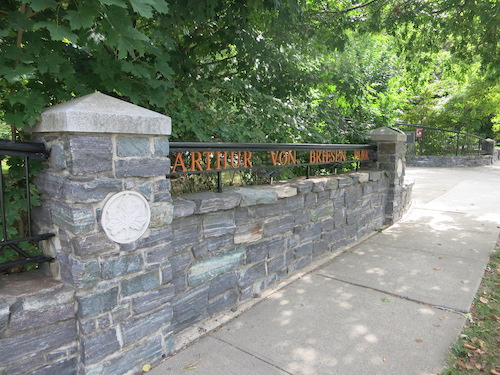
Signs don't always reflect the aesthetic of what's inside, of course. But the handsome lettering and stone wall suggest this place belonged to someone of means, and the park's sweeping paths and green lawns evoke the upper-crust life too.
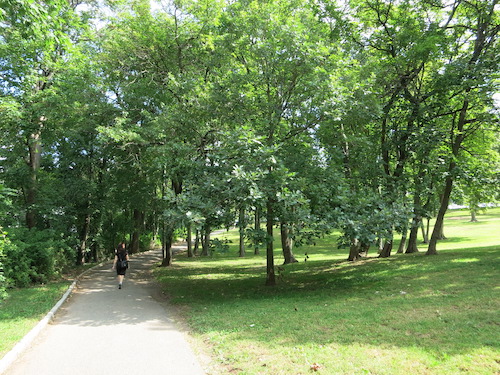
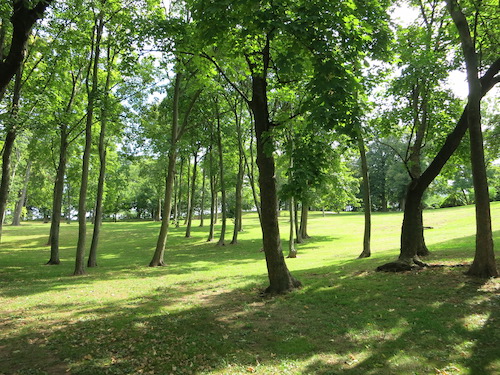
Arthur Von Briesen wasn't a typical rich gentleman, though. In 1876 the German immigrant and Civil War veteran helped found the German Legal Aid Society for the benefit of poor German immigrants. Later he became its president. In 1896 it evolved into the (just plain) Legal Aid Society, offering free legal services to cityfolk wherever they came from.
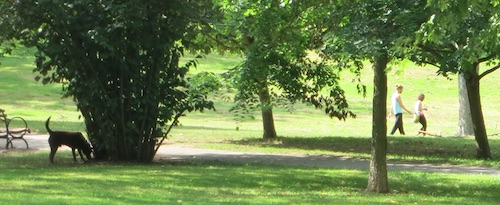
"Von Briesen argued," says the Parks Department website and historic sign, "that the benefits of democracy should be available to all, regardless of nationality. Immigrants, he believed, made better citizens when they are treated justly." It's wisdom some of today's public figures might do well to take to heart.
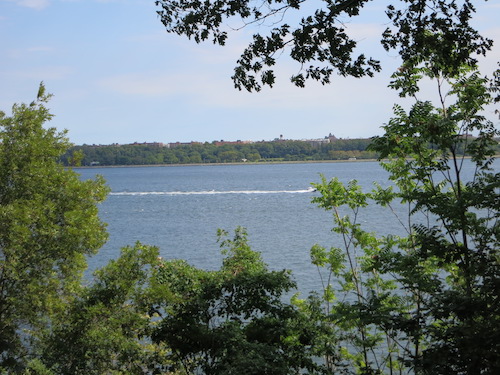
Look northward and there's the lower Manhattan skyline.
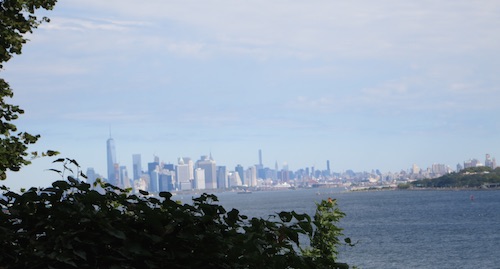
Look south to Fort Wadsworth and the Verrazano-Narrows Bridge.
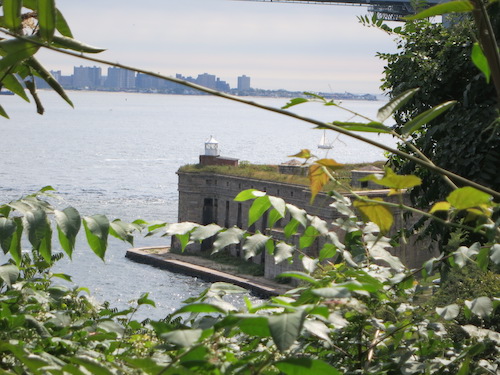
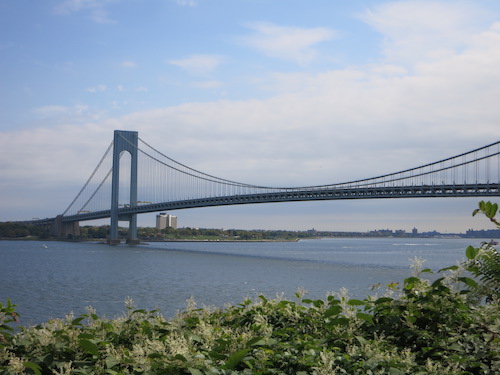
After Von Briesen died in 1920 the estate lay fallow until his heirs donated it to Parks. Parks Commissioner Robert Moses had the decrepit remaining structures demolished, and the park opened to the public in 1949. A renovation in 2001 has left us with the park in its present state, with some of Von Briesen's red oaks, horsechestnuts, and tulip trees lingering.
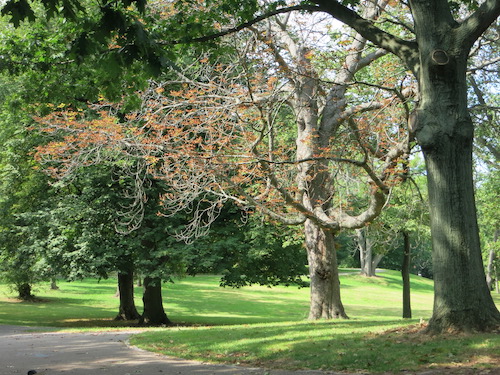
My favorite quote from the historic sign reads: "Frequent attempts to add active recreation facilities to this site failed as Parks determined that the site remain 'the most beautiful passive park in the city.'" It's hard to argue with that.
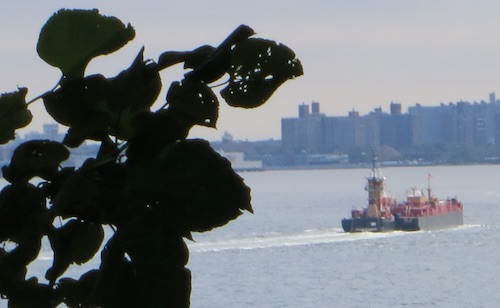

No comments:
Post a Comment